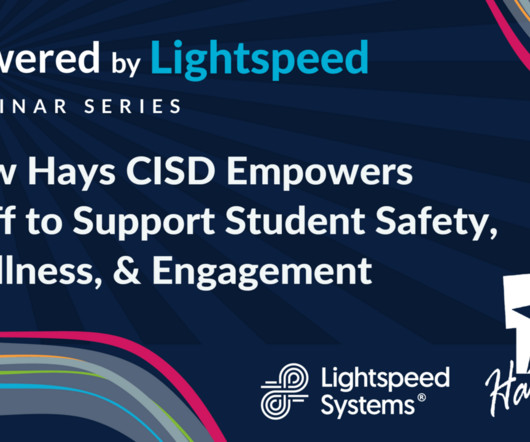Lightspeed Learning Lab – Edtech Best Practices for a Smooth Return to School
Lightspeed Systems
AUGUST 7, 2023
Lightspeed Learning Lab – Edtech Best Practices for a Smooth Return to School You’re working tirelessly to ensure a smooth transition back-to-school and your edtech ecosystem plays a big role. 12:09 It doesn’t work from one classroom to the next much less, a district of 36 different sites. Thank you. 12:17 Debit.















Let's personalize your content